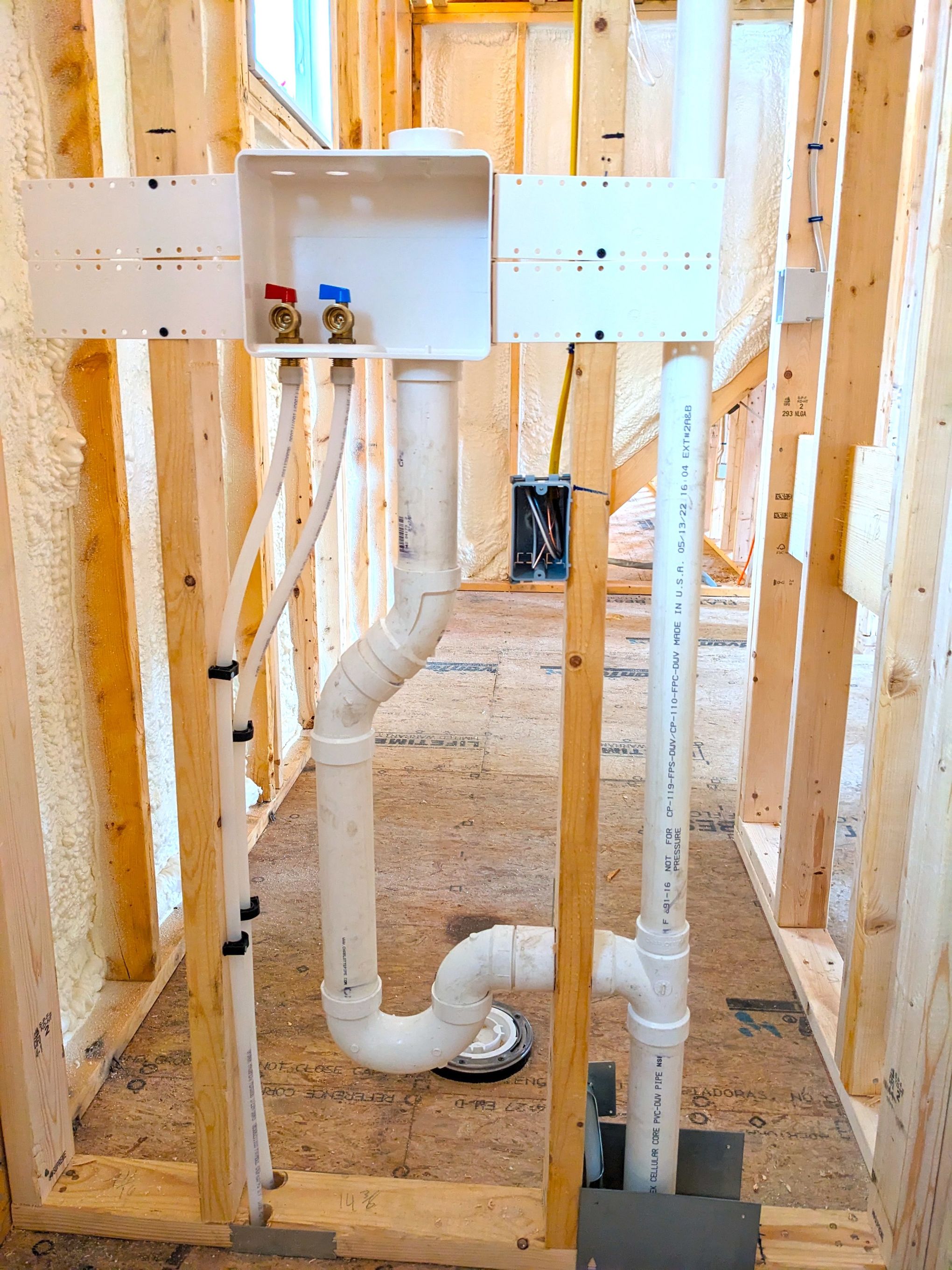Exploring The Importance of Adequate Ventilation in Plumbing Systems
Exploring The Importance of Adequate Ventilation in Plumbing Systems
Blog Article
Here underneath you will discover some professional expertise in relation to What Is A Plumbing Vent & How Do They Work?.

Appropriate ventilation in plumbing systems is typically ignored, yet it is important for preserving the performance and safety of your home's plumbing. Air flow assists manage atmospheric pressure, avoid the buildup of dangerous gases, and ensure the reliable elimination of waste. In this guide, we will discover the significance of correct plumbing air flow, how it functions, and the benefits it offers your pipes system.
Recognizing Ventilation in Plumbing
Air flow in pipes describes the network of pipelines that permit air to move through the water drainage system. These vents serve several functions, consisting of controling atmospheric pressure within the pipes, preventing drain gases from entering the home, and assisting in the smooth circulation of wastewater.
How Ventilation Functions in Plumbing Equipments
Atmospheric Pressure Law
Correct air flow maintains well balanced air pressure within the plumbing system. When water moves with pipes, it displaces air. Without sufficient air flow, this variation can create unfavorable stress, leading to slow drains pipes or siphoning of water from catches, which can cause undesirable smells to permeate right into the home.
Preventing Drain Gas Buildup
One of one of the most important functions of plumbing vents is to prevent sewer gases, such as methane and hydrogen sulfide, from gathering within the home. These gases can posture significant health risks and are highly combustible. Vent pipelines enable these gases to escape safely outside.
Assisting in Waste Elimination
Ventilation helps in the effective removal of wastewater by stopping airlocks in the drain system. When air can move easily via the vents, it allows water and waste to flow efficiently with the pipes, minimizing the risk of blockages and back-ups.
Sorts Of Plumbing Vents
Key Heap Vent
The major pile air vent, additionally referred to as the air vent stack, is the key vent in a pipes system. It expands from the major drain line up via the roofing system, enabling gases to escape and fresh air to go into the system.
Branch Vent
Branch vents attach to the major pile vent and serve private fixtures, such as sinks, toilets, and showers. These vents make sure that each fixture has appropriate ventilation to operate correctly.
Air Admission Shutoff (AAV).
An Air Admission Valve (AAV) is a one-way shutoff that allows air to enter the plumbing system without the requirement for a traditional vent pipeline expanding with the roof covering. AAVs are commonly utilized in restorations or areas where setting up a standard vent is impractical.
Indicators of Poor Air Flow in Plumbing.
Slow Draining Fixtures.
If your sinks, bathtubs, or bathrooms are draining pipes slowly, it could be an indication of bad ventilation. Inadequate air flow can develop a vacuum cleaner result, making it hard for water to drain correctly.
Gurgling Appears.
Gurgling sounds coming from drains pipes are frequently an outcome of air being sucked with water traps because of negative pressure in the pipelines. This is a clear sign of not enough ventilation.
Undesirable Smells.
Drain smells inside your home are a warning that your pipes system is not appropriately aerated. This can imply that sewer gases are not being sufficiently vented outside, bring about possibly hazardous conditions.
Common Ventilation Blunders.
Inadequate Vent Sizing.
Using undersized air vent pipelines can bring about inadequate air circulation and stress discrepancies in the system. It's vital to make use of vents that satisfy the particular requirements of your plumbing system.
Improper Vent Positioning.
Positioning vents too far from the fixtures they serve can decrease their effectiveness. Correct placement makes certain that air can flow easily and effectively with the system.
Disregarding Code Requirements.
Building ordinance supply specific standards for pipes air flow. Overlooking these codes can lead to a system that falls short to operate correctly and might lead to expensive repair work or health hazards.
Benefits of Proper Ventilation.
Boosted System Performance.
Effectively aerated plumbing systems run more effectively, with fewer obstructions, faster draining pipes, and much less stress on the pipelines. This effectiveness expands the life-span of the plumbing system.
Improved Air Quality.
By preventing drain gases from entering your home, appropriate air flow contributes to much better interior air top quality, making your living atmosphere healthier and more comfortable.
Avoiding Water Damages.
Sufficient air flow helps prevent water from being siphoned out of traps, which can lead to sewer gases going into the home and causing water damages over time.
Actions to Ensure Appropriate Ventilation.
Consulting Plumbing Codes.
Constantly seek advice from neighborhood plumbing codes when creating or changing your plumbing system. These codes supply the essential standards for proper venting and ensure your system satisfies safety and security standards.
Normal Assessment and Maintenance.
Routine inspections can assist identify prospective air flow concerns prior to they become significant problems. Maintenance jobs, such as cleansing vent pipelines and looking for obstructions, are important for keeping the system in good working order.
Professional Installment.
For brand-new setups or major modifications, it's important to employ a professional plumbing. They have the competence to guarantee the air flow system is properly made and set up according to code.
Conclusion.
Appropriate air flow is an important component of any type of pipes system, guaranteeing that it works efficiently and safely. By recognizing the importance of ventilation, acknowledging the indications of poor ventilation, and taking steps to maintain your system, you can stop expensive issues and shield your home's air top quality.
4 Things You Should Know About Your Plumbing Vents
What Plumbing Vents Are
Also called a vent stack, a plumbing vent is a vertical pipe attached to your drain line that runs through your roof. The plumbing vent pipe, or plumbing air vent, removes gas and odors from your plumbing system and allows fresh air to enter the pipes, helping the water to flow out of the drain pipes.
What Plumbing Vents Do
Plumbing vents have two basic functions. One of which is to allow unpleasant smelling wastewater and sewer gasses to escape your plumbing system instead of entering your home. Plumbing vent pipes are typically located on roofs, away from windows, to ensure the fumes exit the home completely.
The other function of the plumbing vent is to move fresh air into your plumbing system. This helps move water through every plumbing fixture in your house, like toilets and sink drains. Think of the way in which you need to let a little air into the bottle as you pour soda in order to make the drink flow smoothly.
Different Types of Plumbing Vents
True vent: This is the most common vent option. In simplest terms, a true vent is a vertical pipe attached to your drain line that exits through the roof. They often function as the main vent that other fixtures can connect to. Re-vent pipe or auxiliary vent: Attached to the drain line near specific plumbing fixtures, re-vent pipes run up and over to connect to the main vent. Common vent: Two plumbing fixtures installed on opposite sides of a wall are typically tied into the vent stack using something known as a sanitary cross. Wet vent: This venting option operates as a drain pipe and a vent at the same time. Wet vent drainage systems drain water from one fixture while venting the air from another. Although they’ve been used for over 100 years, wet vent systems have only recently been added to the plumbing code in many areas. If you’re planning on installing one in a bathroom remodel, make sure you check your local code prior to construction. Loop vent: For free-standing fixtures like kitchen island sinks, loop vents are ideal. These vent pipes run under the floor, rise from the P-trap, and create a loop inside the cabinet sink. Air admittance valve: An AAV is a one-way mechanical valve typically installed at the site of the plumbing fixture. AAVs allow venting to occur without having to tie into a larger venting system. They’re ideal for venting fixtures where you aren’t able to easily connect to an existing vent system. Common Plumbing Vent Issues
Although vent pipes typically don’t have water flowing through them, they’re still subject to many typical plumbing issues. For example, clogs are one of the most common problems associated with sewer vent pipes. If your vent pipe gets clogged, all of your plumbing fixtures tied into the vent stack will be affected.
A sink with a slow drain that bubbles and gurgles or a strong sewage smell around your toilet are both indicators that your toilet vent pipe is clogged. Because most vent pipes exit through the roof, old leaves, twigs or even a bird’s nest could be clogging the pipe.
Clogs in your vent pipe system cause a buildup of negative pressure, meaning that water won’t be able to flow out of your home very well. It’s similar to putting your finger over the opening of a straw to trap water inside. When you remove your finger, the water is able to flow out of the straw.
If you suspect you have any blockage in your vent, make sure you have a professional come examine the situation. Left unchecked, a blocked air vent can lead to other costly repairs, like leaks and sediment buildup.
Under Pressure
Pipe vents are essential aspects of a home’s plumbing system. Owning a home means learning about all sorts of things you never put much thought into before. But by understanding as much as you can about the important systems of your home, you can keep those budgets intact and those anxiety levels low.
https://www.homeserve.com/en-us/blog/home-improvement/plumbing-vents/

I stumbled upon that blog post on What Is a Plumbing Vent and Why Is It Important when doing a lookup on the search engines. Make sure you pause to distribute this post if you enjoyed reading it. Bless you for being here. Please come visit our website back soon.
Schedule A Service Report this page